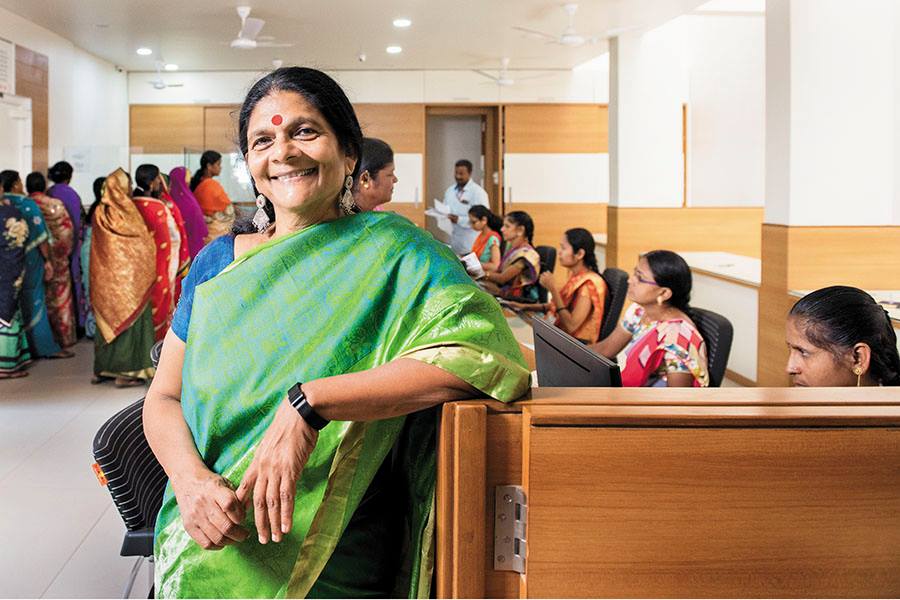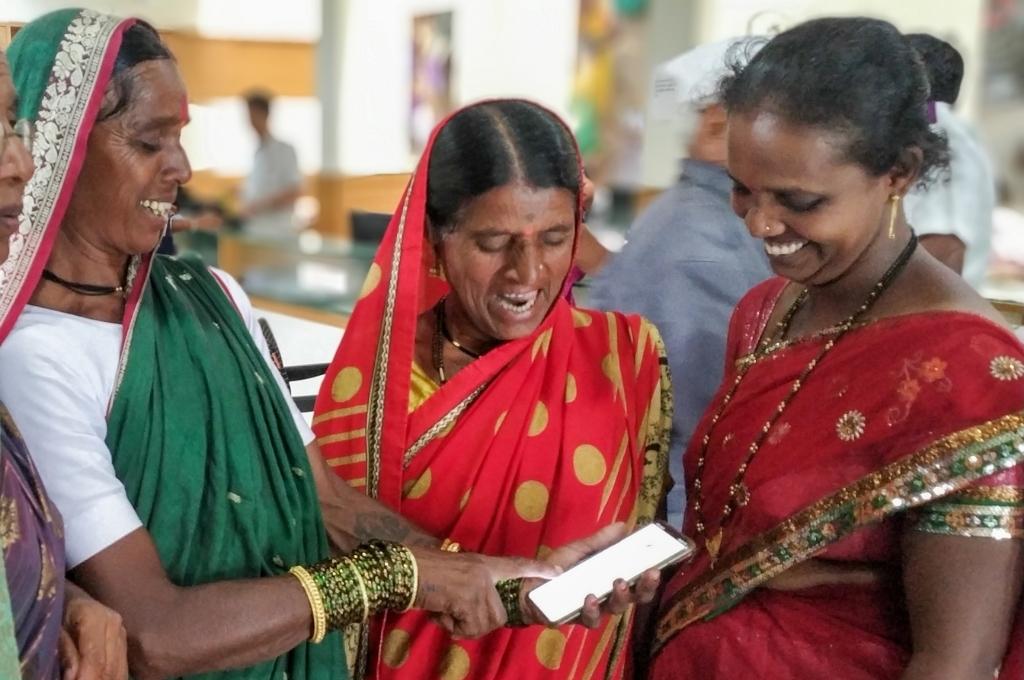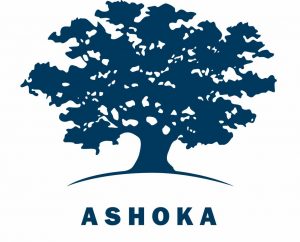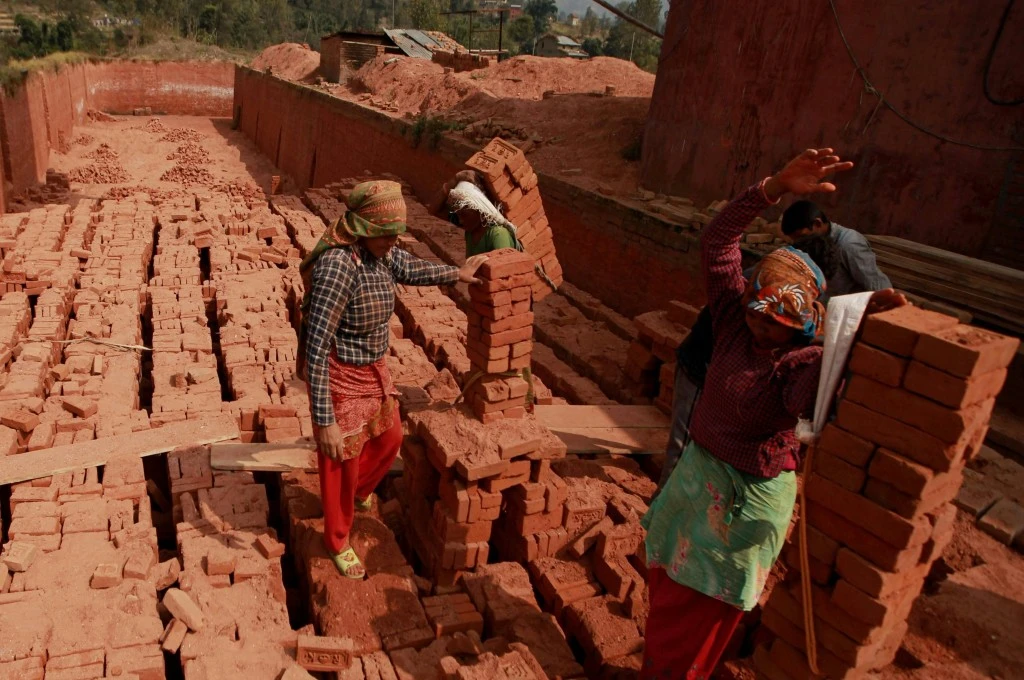Chetna Gala Sinha, the founder of Mann Deshi Foundation, set up India’s first rural bank for women. The foundation has since grown to supplement the bank by providing access to financial education, skills, and a support network for rural women and their communities.
In this interview with IDR, Chetna highlights the challenges faced by women micro-entrepreneurs, the critical need for an enabling ecosystem, the role that the private sector can play, and the importance of family support for women.

Over the years, Mann Deshi has worked extensively with small and micro women entrepreneurs. During this time, you have been talking about the need to build an enabling ecosystem for micro-entrepreneurship. What do you mean by this?
The World Economic Forum published a report that said if you want to close the gender gap, it will take 135 years. Bloomberg said it would take 213 years. When we look at all this data, the one question that keeps coming up in my head is—are we going to wait for that long?
Women entrepreneurs at the grassroots aren’t willing to wait. They want to build their businesses now and they have the confidence to do it. They’re prepared to take the risks, whether in the form of capital or access to markets. They are registering themselves on state e-commerce and micro, small, and medium enterprise (MSME) platforms such as Udyam or Udyog Aadhaar, buying smartphones, improving their credit scores, and making themselves bankable. In the pandemic, we saw that women actually drove the economy with their household businesses. Now with this experience, they want to scale their businesses, and they are raring to go. The question is: Is the rest of the ecosystem ready? Are supply-side stakeholders doing their part?
To set up an enterprise, you need capital, access to markets, and access to supply chains. One of the biggest barriers for women is access to working capital. And today, while the microcredit industry is massive, totalling more than USD 20 billion, we have yet not graduated from microcredit to microenterprise. There are three reasons for this.
Bankers are still nervous about lending to women, even if they have a strong credit history from being part of a self-help group.
First, the financial sector has not innovated enough when it comes to individual loans for women to start or scale their enterprises. Banks and non-banking finance companies (NBFCs) are still more comfortable with group lending than lending to individuals. But if we want women to set up enterprises, they need individual loans. Bankers are still nervous about lending to women, even if they have a strong credit history from being part of a self-help group (SHG).
Mann Deshi has its own bank which gives loans to women and women-owned enterprises. Over the years, we have created an ecosystem that includes alternative credit scores, helping women market their products, registering them on multiple digital platforms for e-commerce, and so on. By doing this, the chances of scale and success for women-owned enterprises went up dramatically.
To allay the fears of bankers when it came to these women borrowers, we realised that they needed to experience this model too. We, therefore, partnered with State Bank of India (SBI) to scale this approach. As a starting point, we requested SBI’s officers to check the CIBIL rating of the women borrowers. Since most of these women are part of joint liability groups that receive group loans from financial institutions, all of them have a joint CIBIL rating, which is usually excellent. But there are also many women who are new to credit. So we developed an alternate credit rating tool—based on the information that grassroots entrepreneurs have—and encouraged SBI to use this rating as well, while determining if women were creditworthy.
Mann Deshi created a digital financial literacy programme that focused on teaching the women how to undertake digital transactions.
Mann Deshi then created a digital financial literacy programme that focused on teaching the women how to undertake digital transactions, so that they could build a trail of digital money. As we were designing the digital financial literacy training, we added a component of digital accounting as well. This allows the women to send bills to their clients digitally. Clients then tend to pay digitally as well, thereby creating a digital trail of revenue for women entrepreneurs. Once banks are able to see this digital trajectory, they become confident that there is enough cash flow for the loans to be repaid, and that they will not become a bad debt.
This is the first building block of the ecosystem—access to working capital via an alternative credit score, digital financial literacy, and digital source of money.
The second aspect is sharing of market risk. How do you get these women on various e-commerce platforms, so that they get diverse and multiple opportunities to sell their products? Once their business and revenues increase, bankers will feel confident that the women are generating enough business to repay loans.
The third is getting the product to the women and enabling ease of repayment. There has to be a doorstep-assisted model where you help them repay regularly. If they repay their first loan on time, the bank will continue to lend to them because banks also need quality clients.
In short, how can we reduce the pain and nervousness of lenders when women do not have collateral guarantees in the absence of group loans? How do we create alternatives that allow women to be seen as viable individual borrowers, allow them to be part of the formal sector once they get working capital, and thereby allow them to scale their household businesses successfully?
The last big challenge for women is the lack of support from their families. But if bankers provide the financial support, and if the women become successful, it opens the door for family members to get access to credit. This in turn automatically gets the women the support they need from their families.
What will it take to replicate this model across the country where grassroots organisations like Mann Deshi don’t exist?
We have strong government institutions such as the National Bank for Agriculture and Rural Development (NABARD), Small Industries Development Bank of India (SIDBI), and others, that support the agriculture and MSME sectors through credit. They don’t work directly with farmers or entrepreneurs; instead, they prefer to partner with local organisations such as microfinance institutions (MFIs) and nonprofits. In Maharashtra, we are partnering with the state agency, Mahila Arthik Vikas Mahamandal (MAVIM), to support their 300,000 members to co-create an ecosystem that will grow their businesses as well as connect them to affordable growth finance.
The microcredit and joint liability group lending story is a success story—it’s been adopted around the world.
Collaborations with state governments are important. In states such as Andhra Pradesh, Telangana, and Odisha, where the political leadership is invested in supporting microenterprises, we can already see the change happening. The next step is to share those experiences on broader platforms because I’ve seen that if one state does it and proves the model, other states are open to doing it too.
The microcredit and joint liability group lending story is a success story—it’s been adopted around the world. Grameen Bank, Self Employed Women’s Association (SEWA), and others created the business model, took it to scale, worked with governments to incorporate CIBIL ratings, and persuaded investors to come in.
The time has come to do the same for microenterprises. To do this, we need to create public goods. Public goods could be like alternate credit ratings that are based on the wealth of information that microcredit borrowers already have. All women borrowers know what their rating is, they can see their ratings if they are borrowing digitally, and they make sure that their ratings hold so that they are eligible for future loans. Can something similar be created for microenterprises on e-commerce platforms like Amazon or even state-sponsored ones like Kudumbashree or MAVIM, where women can market their products? They will then be able to get clients and grow their businesses. Then the bankers are more likely to come. For all this to happen, however, there needs to be political will. If we get the state political leadership involved, the replicability will be faster.
The lack of an ecosystem is one of the big challenges that women face as they scale their microenterprises. But even as this is being built, what are some of the newer challenges they will face going forward?
A constant request from our women entrepreneurs, as they scale their businesses, is the need for technology in the form of equipment and machinery. In India, there is a general belief that if you are poor, then secondhand equipment—secondhand cars, machines, tractors—is good enough for you. So, our micro-entrepreneurs buy secondhand machines, which consume more electricity, affect production efficiencies, and increase the cost per unit. This makes their product uncompetitive in the market.
When Mann Deshi did a technology audit in 2017-18 of our women-run enterprises, we found that more than 60 percent of the women were using secondhand machinery, whether they were making paper clips, school uniforms, or spice powders. When asked why, they told us that they weren’t getting access to information about new affordable energy-saving machines or the loans needed to buy them.
For banks, it was easy to build a loan product of hire-purchase for the women, because it is a regular financial product.
We did our research and found that in places such as Rajkot, Coimbatore, and Kochi, a wide range of machines are available; it’s just that many entrepreneurs don’t know about them. So, we started organising machinery exhibitions similar to the ones in Mumbai and Delhi. Large manufacturers attend these mainstream exhibitions to buy the machinery they require. We did this for women entrepreneurs. And we were surprised by the number of machines women bought. For banks, it was easy to build a loan product of hire-purchase for the women, because it is a regular financial product. With access to credit—SBI’s hypothecation product and Mann Deshi Foundation’s interest-free revolving fund—several women have started buying new equipment.

Access to equipment however doesn’t take away from the fact that they still have to overcome social norms. A case in point is Vanita Salunkhe, who makes paper bags. She wanted to cater to companies who wanted their logos printed on bags. Vanita approached a printer to buy a printing machine. He told her that she would not understand how to use the machine, and to get her husband instead. She took that remark as a challenge—I’m running the business why would I not understand? Today she has 15 machines, employs 50 women, and is a trainer at the zilla parishad in Satara’s district rural administration department on the use of non-plastic material.
It’s women like her who have taught me that we do not need to have poor solutions for poor people.
Is there a role for the private sector in all this? As corporates, or venture capitalists and private equity investors?
The pandemic showed us that during the crisis it was micro-entrepreneurs who provided what was needed—masks, PPE kits, and so on. The problem is not the business model; it is the (lack of) ease of doing business. We haven’t even addressed this issue for the corporate sector yet; when we solve for it for the MSME and even the social sector, investor money will come.
The bigger challenge is finding the investors who will invest in women-led enterprises—whether grassroots or commercial startups. Investors will have to apply a gender lens to their investments. I’ve been in so many meetings where if the woman is married and established, then investors are okay with investing, but not so if they are young.
You mentioned the role of family. How they might not be supportive initially, but can stand by the women once the business starts. How do women get their families to rally around them?
If you want women to get their family’s support, you have to celebrate them, give them awards, and give awards to their husbands. The pride at what these women have achieved makes the family come around. In the beginning, many families will say, “If you start a business, we will lose face and money, or you will be thrown out of the house.”
But when they are celebrated, things change. One of our women entrepreneurs—Sunita Kamble—was nominated for an award by NITI Aayog. She flew from her village in northern Maharashtra to Delhi to receive it. When she came back, the entire village including the panchayat leaders and village elders—people who would not drink water from her house because she’s a Dalit—came to her home, celebrated, and honoured her. So, these women are also breaking centuries-old caste and patriarchal barriers.
There’s so much I have learned from women; there’s so much wisdom. When we were giving out dividends to women from the profits of Mann Deshi Bank, they said, “We are ready to sacrifice the dividend and help you create reserves for the bank.” They had this vision of creating a stronger institution by investing in the institution. They want to make their collectives powerful.
The women always say, “My capital is my courage, and my courage is my capital.” And I think that wisdom must be understood by lenders and investors.
—
Know more
- Learn more about the impact of the COVID-19 pandemic on women-led enterprises.
- Read about how the pandemic made women micro-entrepreneurs digitally savvy.
- Understand the gender financing gap and how it has worsened during the pandemic.
- Explore the potential of digital literacy among rural women in India.







